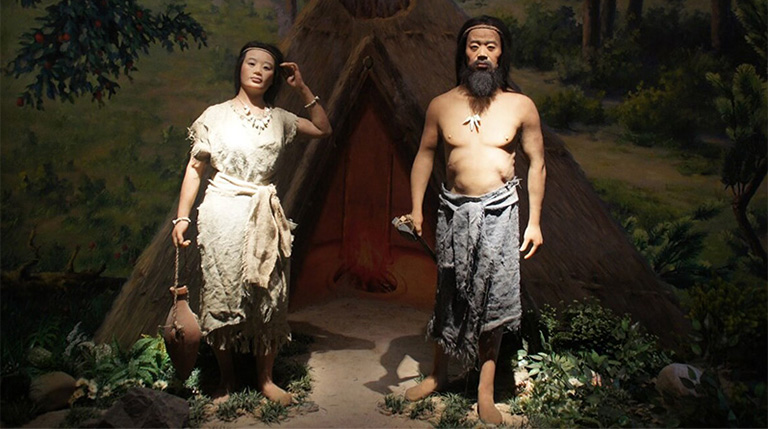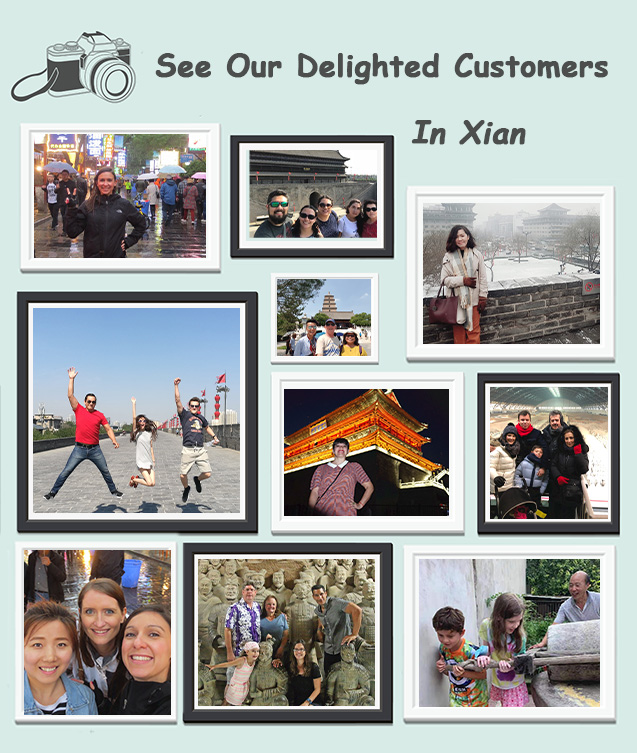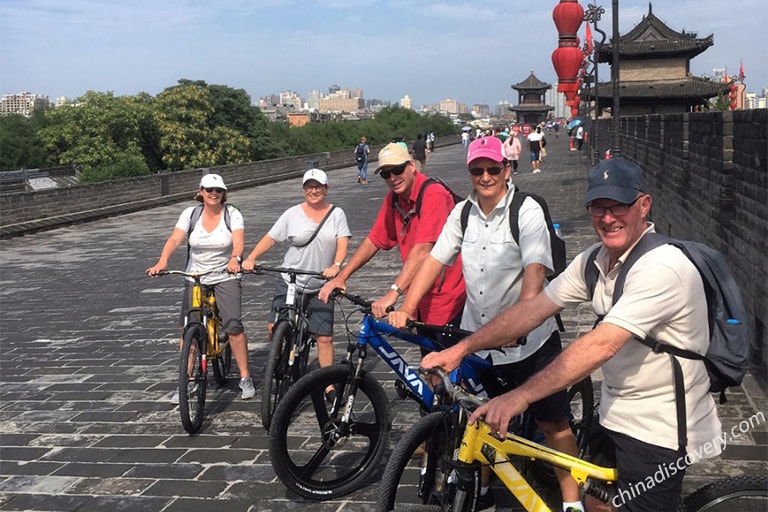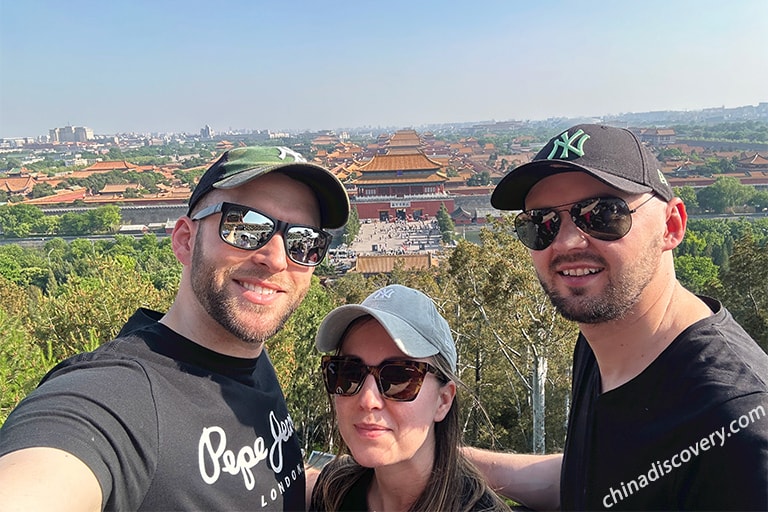Why Is Xi'an Banpo Village So Profound?
The Banpo Site (半坡遗址) stands as the most extensive and well-preserved matrilineal clan village settlement within the Yellow River basin. This exemplary relic from the Neolithic era, dating back approximately over 6,000 years, unveils a rich cultural tapestry encompassing the social structure, production, economic systems, marital customs, traditions, and artistic culture of the Yangshao culture matrilineal community. Built on the Banpo Site, Banpo Village in Xi’an is situated on the eastern bank of the Chan River, covering 107.4 acres with an exhibition area of approximately 4,500 square meters. It houses over 18,000 artifacts, including more than 4,000 of significant importance, over 300 fossil specimens, and numerous human and animal skeletal remains from the Neolithic era.
Banpo Village comprises three sections: Exhibition RoomⅠ and Exhibition RoomⅡ which include five evocative sections: “Riverside Elegance,” “Life’s Enchantment,” “Harmonious Pastoral,” “Soulful Essence,” and “Enigmatic Secrets”; Banpo Ruins Site, Temporary Exhibition Room Ⅲ and Temporary Exhibition Room Ⅳ are also its main bodies. All of them bring to life the enchanting artifacts and the vibrant culture of Banpo’s ancient dwellers.
Exhibition RoomⅠⅡ - How Can We Interact With Prehistoric Treasures In Banpo Village?
In general, you’ll find a treasure trove of daily life tools, typical painted pottery and exquisite art pieces, which are excavated from the site in these two captivating exhibition rooms.
Explore Banpo People’s Production Tools
Production tools and daily life items primarily refer to the primitive implements used by the early inhabitants excavated from the Banpo Site and Jiangzhai Sites (姜寨遗址). These include stone axes, stone shovels, stone knives, scraping tools, pounding and smashing tools, arrowheads, grinding stones, spindles for spinning, bone awls, bone knives, bone needles, fish hooks, and harpoons, etc.
In addition, Banpo people were already capable of making various types of pottery, like bowls, jars, and pots, with different textures such as fine clay, fine sand, and coarse sand. This highlights pottery-making as a distinctive artisanal activity tailored to practical needs within the Banpo matrilineal clan society.
 Bone Spatula of Banpo People
Bone Spatula of Banpo People ©西安半坡博物馆(bpmuseum.com)
Small-Mouthed Pointed-Bottom Flask 小口尖底瓶
Initially believed to be a wondrous self-filling water container, the Small-Mouthed Pointed-Bottom Flask, a hallmark of Banpo culture, is intricately fashioned from red clay. These vessels exhibit fine craftsmanship, boasting a modest mouth, short neck, rounded body, pointed base, and intricate diagonal cord patterns. Excavated examples come in different sizes, reflecting the diverse artistry of ancient Banpo and making them authentic cultural relics.
The Small-Mouthed Pointed-Bottom Flask has sparked curiosity regarding its intended function and purpose since its discovery. Later the late 1980s witnessed an experimental archaeology conducted in collaboration between the Banpo Village and Beijing University. The experiments revealed that while the top-heavy design allowed it to start filling with water when placed in a water source, its center of gravity shifted as it filled, causing the mouth to resurface before it could fully self-fill. Consequently, interpretations regarding its function and use have evolved, ranging from it being a vessel for liquids such as alcohol to serving as items for rituals or burial contexts.
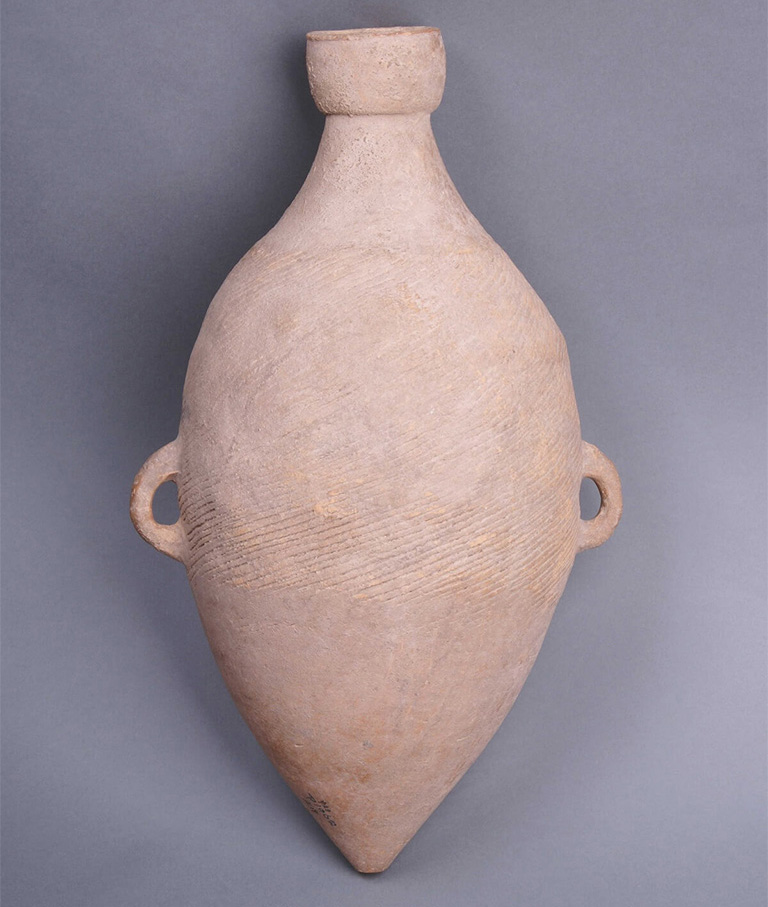 Small-Mouthed Pointed-Bottom Flask
Small-Mouthed Pointed-Bottom Flask ©西安半坡博物馆(bpmuseum.com)
Appreciate Banpo Painted Pottery
Banpo Site’s pottery is a riot of colors, predominantly in red clay, showcasing the essence of the painted pottery culture. What’s truly intriguing is the presence of 20-30 symbols etched along the rims of certain pottery bowls, hinting at the possible origins of Chinese writing , and these intricate paintings mainly grace the shoulders of the vessels including adorning bowls, basins, jars, and slender-necked pots.
The most captivating feature of painted pottery is the seamless fusion of human faces and fish motifs, resulting in the distinct “Human-Faced Fish” pattern—an artistic gem of that era. Among these gems, the basins adorned with human-fish and human-net motifs stand as remarkable milestones in the annals of human history.
 Red-Clay Human-Faced Pot
Red-Clay Human-Faced Pot ©西安半坡博物馆(bpmuseum.com)
Human-Faced Fish Basin 人面鱼纹盆
As the greatly treasured painted pottery from the Banpo Site, the Human-Faced Fish Basin holds the prestigious title of a National First-Class Cultural Relic and its captivating design served as the muse for the beloved Fuwa(福娃), the Beijing Olympics mascot, fulfilling a century-old dream for China. Intricately crafted in red clay with striking black designs, the Human-Faced Fish Basin boasts simple elegance. Inside, you’ll uncover two human and two fish motifs that tell a fascinating story. The human figures, with their closed eyes, artfully cradle two fish in their mouths, and two small fish motifs on the ears create a truly enchanting mermaid-like pattern.
This extraordinary artifact has ignited lively scholarly discourse, with interpretations spanning totemic symbolism, mythological tales, ancestral connections, primitive beliefs, masks, fish imagery, symbols of power, and even extraterrestrial inspirations. Upon uncovering this ceramic basin, archaeologists recognized its poignant role in a child’s burial, elegantly resting atop pottery. The small aperture, believed to be a portal for the child’s soul, speaks volumes of a mother’s undying hope and deep love. The basin is not only an artistic triumph but a testament to enduring familial bonds. Echoing the sentiment of Mr. Guo Moruo (郭沫若), “A parent’s love is unyielding through eternity.”
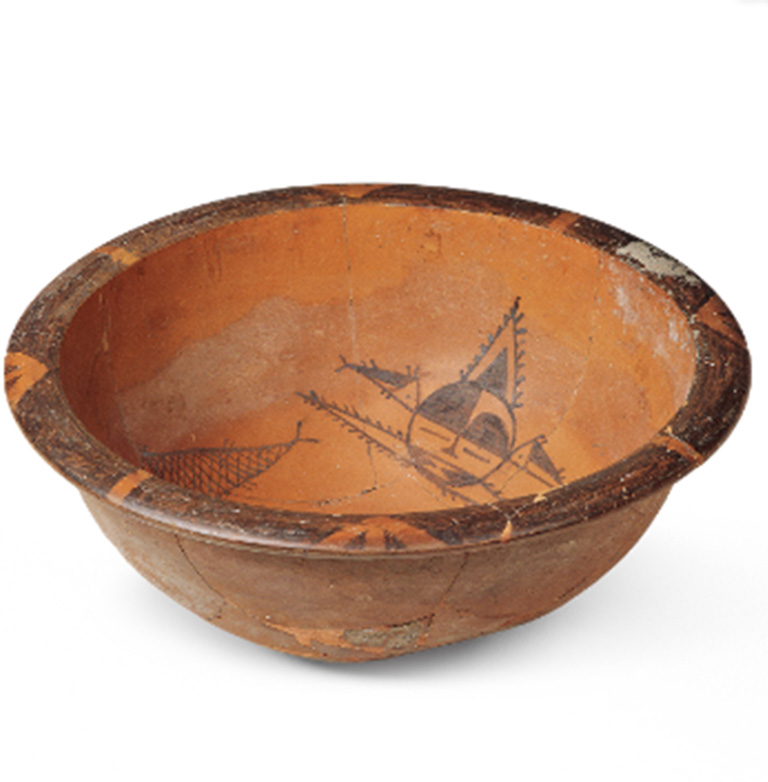 Human-Faced Fish Basin
Human-Faced Fish Basin ©中国国家博物馆(chnmuseum.cn)
Glimpse the Aesthetic of Banpo People
Beauty has been a timeless human pursuit. The Banpo people’s aesthetic sense shines through the extensive collection of over 1,900 ornaments displayed at the Banpo Village. Even in the late Paleolithic era, they adorned themselves with stone beads, seashells, animal teeth, and fish bones. These ornaments, made from materials like pottery, stone, bone, teeth, shells, and jade, come in various shapes and served different purposes. They include rings, pendants, beads, charms, squares, flat pieces, and tubes, used as hairpieces, earrings, necklaces, bracelets, and waist embellishments. This trove encapsulates the enduring human quest for beauty.
 Shell Ornament of Banpo People
Shell Ornament of Banpo People ©西安半坡博物馆(bpmuseum.com)
Get Immersed into Banpo’s Life by Virtual Reality
Banpo Village is rooted, but you can flow in light of it. In these two captivating rooms, the recent display of relics unearthed from Banpo ruins integrates modern technologies like virtual electronics and holography, vividly reviving the splendor of the ancient Banpo culture. The newly introduced mural gallery, blending reality with illusion and utilizing audio-visual technology, dramatically recreates scenes of Banpo inhabitants, and vividly showcases their lives and struggles against nature.
 Working Situation of Banpo People
Working Situation of Banpo People ©西安半坡博物馆(bpmuseum.com)
Banpo Ruins Site - What Are the Dwellings & Burials like Over 6000 years ago?
The Banpo site in Xi’an is a significant archaeological landmark covering 50,000 square meters. It features the residential area, burial grounds and pottery-making workshops. Dwellings have hearths and drainage, while the burial sites organized by lineage contain ceramic vessels. At the Banpo pottery-making zones, two types of pottery kilns were found: horizontal and vertical. One of the horizontal kilns is among China’s earliest and well-preserved counterparts.
Peculiar Prehistoric Residences
At Banpo, ancient residences were initially featured semi-subterranean dwellings, where half of the structure was underground, and the other half, with wall excavation, extended above the ground with a roof. These homes were both low and damp. It wasn’t until the late primitive society that they began constructing above-ground walls and supporting roofs with wooden pillars. This upright wall structure with sloping roofs laid the foundation for traditional Chinese architectural design, a remarkable innovation for its time.
Additionally, a formidable ditch, over 300 meters long, about 5 meters deep, and 6 meters wide, served as a defensive fortification to protect the village from outside tribes and sudden animal attacks.
 Semi-Subterranean Dwellings of Banpo People
Semi-Subterranean Dwellings of Banpo People ©西安半坡博物馆(bpmuseum.com)
Sacred Burial Grounds
Deep within the heart of the Banpo site, a sacred tapestry unfolds, revealing over 250 hallowed resting places—174 for adults, 76 for innocent children. A mystical burial ground lies beyond the trench, an ancestral haven for adult souls. In the residential maze, children find eternal embrace in urn burials. This sacred ground whispers secrets of an ethereal clan which is arranged in harmonious clusters and rows. Sacred urns cradle the departed, each sealed with a portal for ethereal journeys.
These tombs face the waning west, most solitary, with a few shared by four or two souls. Various rites—extended repose, shadowy embrace, fetal devotion, and enigmatic second burials —unfold. In the Banpo preservation sanctum, a resplendent exhibit showcases nine emblematic graves echoing the ancient celestial hierarchy and the artifacts bear witness to the ancient profound reverence for death and the afterlife. Banpo, with its living enclaves and sacred sepulchers, narrates an unending cosmic ballet.
 Sacrificial Relics
Sacrificial Relics ©西安半坡博物馆(bpmuseum.com)
Temporary Exhibition Room Ⅲ Ⅳ - What Exhibitions Await in Banpo Village?
The temporary rooms host periodic exhibitions related to knowledge, entertainment, and artistry. These exhibitions have garnered widespread acclaim and appeal from both local and international visitors. For instance, with an insightful look into the Neolithic advancements of both the Wei and Yellow River regions, “Tracing Prehistoric Civilization in the Wei River, Basin” - 《筑室于兹——渭河流域史前文明探源》 serves as a testament to the enduring depth and transformative journey of Chinese civilization, underscoring the Wei River Valley’s integral role in shaping China’s historical narrative.
Learn More about Banpo Culture
Banpo Matrilineal Clan Society & Marriage
Living in prehistoric China,the Banpo people had a society where lineage and inheritance likely followed the mother's line, indicating a matrilineal structure. The Banpo Site provides fascinating evidence of a matrilineal society, illustrated by the housing remains where it appears that families lived together in clan-like structures. Intriguingly, the largest graves with the most goods belonged to women, suggesting their prominent status. Additionally, the children were often buried with their mothers, reinforcing the idea of matrilineal descent. The housing compounds themselves were circular, reflecting a communal lifestyle, and the presence of female figurines in the graves points to potential fertility rites or ancestral worship centered around women. All these clues paint a picture of a society where women played a leading role both in life and death .
In the matrilineal society of Banpo, a woman's marriage was a pivotal event, showcasing her autonomy and the community's reverence for the female lineage. Chosen with care, her partner would join a ceremony rich in tradition, every ritual emphasizing her central role. The elaborate burials of women, adorned with goods, suggest that these weddings were significant celebrations, key to weaving the social and familial fabric. These ceremonies were not just about love; they were strategic alliances, ensuring the clan’s prosperity and unity, a glimpse into the Banpo's sophisticated social structure, as revealed by the relics they left behind.
Banpo Oldest Writing
Long before the Qin and Han dynasties, writing had already appeared in China, but at that time, it was only a form of pictographic script. Banpo symbols, found on pottery at the Banpo site near Xi'an, date back to the Chinese Neolithic age. Symbols carved on unearthed pottery and shards number 27 distinct types. In 1952, archaeologists conducting research in Banpo village in Xi'an, Shaanxi, discovered these symbols, dating back 6,000 years, incised along the rim of pottery bowls. For many years, no one was able to decipher them. Nonetheless, their presence clearly indicates another form of written expression, leading to their designation as Banpo symbols(半坡陶文). These constitute some of China’s oldest known characters, over 6,000 years old, predating oracle bone script(甲骨文) by more than 4,000 years, and can be considered the ancestors of Chinese characters.
Banpo Mystical Wonders
For over six captivating decades, Banpo Site has beckoned explorers to unearth its ancient secrets. As the exhibition’s final curtain descends, it unveils three tantalizing mysteries which are igniting the imaginations of all who venture forth:
1. The Enigma of Enigmatic Symbols
On the pottery canvases from Banpo Site, 22 meticulously etched symbols beckon with enigmatic elegance. What stories do they conceal? Are they the marks of creators or the earliest whispers of Chinese script?
2. The Allure of Pointed-Bottom Pots
Petite mouths, rotund bellies, and pointed bottoms define these iconic vessels. Their function is a riddle, with theories ranging from ingenious water pitchers to culinary companions. What ancient wisdom is concealed within their unique form?
3. The Enchanted Tale of Human-Faced Fish
A fusion of human faces and aquatic life, these artistic motifs leave us spellbound. Are they embodiments of humanity within fish, fish within humanity, or an extraordinary union of both? From totemic lore to otherworldly echoes, a tapestry of interpretations unfolds.
These mysteries, ever enigmatic, beckon with an irresistible charm, inviting all to immerse themselves in the captivating world of Banpo culture.
Transportation of Banpo Village
Located at the east suburban and approximately 30 kilometers away from Xi’an city center, Banpo Village is accessible by taxi, subway (get off at Banpo Station on subway Line 1), bus or the dedicated tourist bus . Absolutely, you also can opt for our comfortable one-stop charter service with great convenience.
☛ 2 Days Xi’an City Break (Pick Up from Hotel, Train Station or Airport)
☛ 3 Days Classic Xi’an Tour (Best Highlights Plus Enjoyable Pace)
☛ 3 Days Xi’an Mount Huashan Leisure Tour (Best for Families and Seniors)
Visiting Tips for Banpo Village
1. Passport is needed for entry and no reservation is required. You can purchase on-site (55/45 RMB) or online via the official website or other major ticketing platforms.
2. There are four ways for an enriched experience.
① Each gallery offers a multimedia presentation for context.
② Complimentary volunteer-guided tours and interactive sessions are available.
③ Electronic guides are available for rent (deposit required) or opt for a paid guided tour (lasting approximately 40 mins-1 hour).
④ Familiarizing yourself with the history of the Neolithic ages in advance is recommended for deeper insights.
3. The ambiance is tranquil and it’s not crowded even on weekends, so you can make for a leisure visit.
4. It’s highly recommended to visit both Terracotta Warriors and Horses and the Tang Paradise (大唐芙蓉园) consecutively at once, and it’s also the most popular itinerary for visitors of Banpo Meseum.
Other Historical Attractions in Xian
Banpo Village is relatively close to the Xi’an Ancient City Wall (12km), the Giant Wild Goose Pagoda (16km), and the Terracotta Warriors and Horses (30km). So we recommend combining the visits of these tourist attractions.
Xi’an Ancient City Wall (Cheng Qiang) - Best Preserved City Wall in China
Constructed between 1370 and 1378 AD, Xi’an Ancient City Wall boasts the largest and best preserved existing ancient city wall in China and stands as a testament to the directive of Ming Dynasty’s founding emperor, Zhu Yuanzhang (朱元璋). Prior to ascending the throne and founding the Ming Dynasty, Zhu Yuanzhang heeded the counsel of a hermit: to erect formidable walls, amass ample provisions, and patiently await his destined ascension.
The Giant Wild Goose Pagoda – World Cultural Heritage Site on Silk Road
Erected more than 1,300 years ago, this edifice stands as the oldest attic-style square brick tower from the Tang Dynasty, boasting unmatched grandeur in China. Enriched with a deep Buddhist heritage, storied tales of renowned personalities, and exquisite architectural craftsmanship, it is celebrated as a crowning jewel in the annals of China’s architectural history and a revered Buddhist sanctuary.
Terracotta Warriors and Horses - Emperor Qin Shi Huang’s Mausoleum Site Museum
Hailed as one of the twentieth century’s most illustrious archaeological discoveries and dubbed the eighth wonder of the world, the Terracotta Warriors and Horses lies approximately 1.5 km east of Qin Shi Huang’s(秦始皇) Mausoleum. This grand assemblage, known as the Terracotta Army, serves as the sepulchral tribute to Emperor Qin Shi Huang (259-210 BC), the inaugural Emperor of China.
Hanyangling Museum- Mysterious Mausoleum of Emperor Jingdi of Han Dynasty
Located close to Xian Airport, Hanyangling Museum is the Tomb of Emperor Jingdi of Han Dynasty. Less known to tourists, the 2,000 years’ old mausoleum features in serenity and lifelike pottery figurines and special layout, that reveal a unique funerary system and culture different from the Terracotta Warriors of Qin Dynasty.
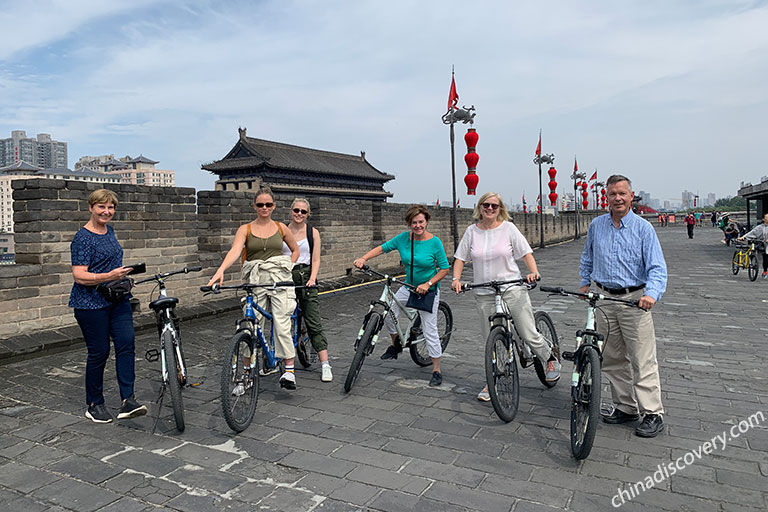 Our Clients on the Wall
Our Clients on the Wall
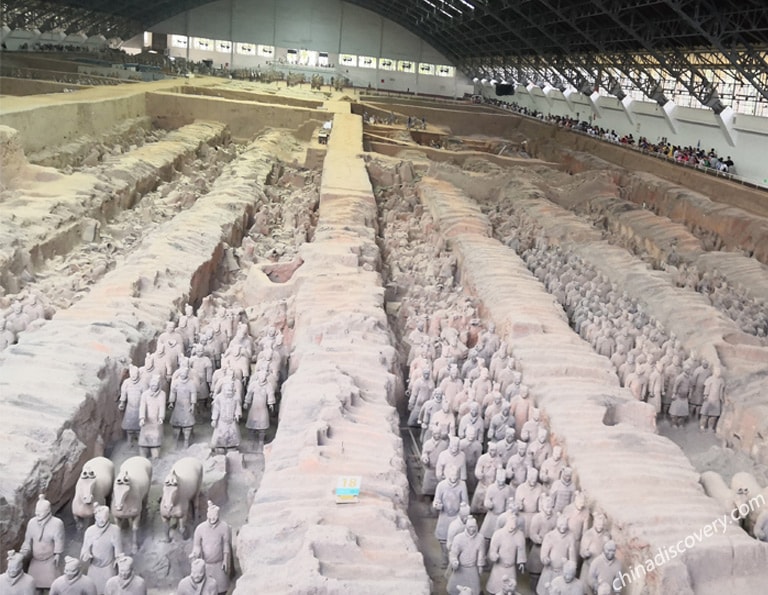 Terracotta Warriors and Horses
Terracotta Warriors and Horses
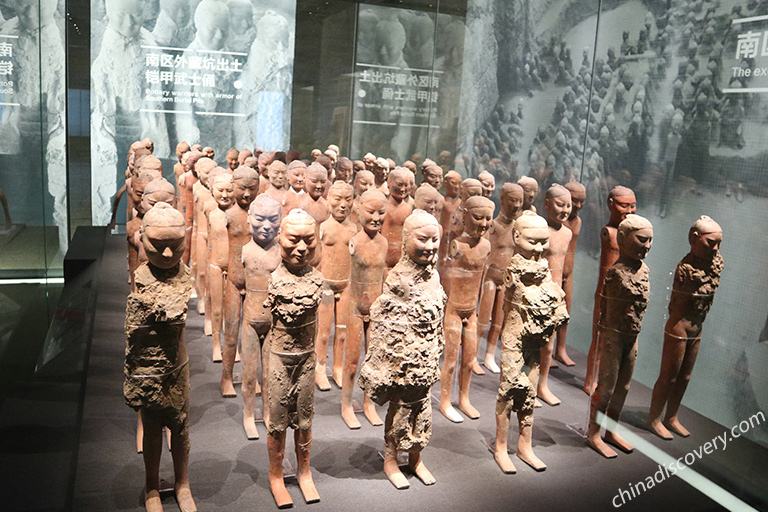 Archeological Exhibition Hall
Archeological Exhibition Hall
Xi’an Tour Packages (Highly Recommended)
☛ 2 Days Xi’an City Break(Hotel Pickup)
☛ 3 Days Classic Xi'an Tour (Best Xian Highlights Plus Enjoyable Pace)
☛ 4 Days Xian Highlights Tour with Mount Huashan Hiking (Xian Essential Highlights Plus Mount Hua Day Trip)
How to Plan a Xian Tour
How to Get to Xi’an: You can fly to Xi’an by international flights from Hong Kong, Macau, Seoul, Bangkok, Kuala Lumpur, Nagoya, etc., or take domestic flights / high speed bullet trains to Xi'an from major domestic cities, such as Beijing, Shanghai, Chengdu, Guangzhou, Hangzhou, etc.
Best Time to Visit Xi’an: The best time to visit Xi’an is March to May (in spring) & (September to November (in autumn) for the weather at this time is fine with beautiful scenery, which can offer more comfortable experience for outdoor sightseeing and activities.
Top Attractions to Visit in Xi’an: Terracotta Warriors, Giant Wild Goose Pagoda, Shaanxi History Museum, Grand Tang Dynasty Ever Bright City, Ancient City Wall, Mount Huashan, Muslim Quarter, Bell Tower, etc.
As the ancient capital city of China for 13 dynasties, ruled by 73 emperors, Xian has left massive cultural heritages and relics for you to explore. Within about two days, you can finish visiting the main sites, which include the incredible man-made wonder, the Terracotta Warriors, the Giant Wild Goose Pagoda, and the Muslim Quarter where you can get to try the local cuisines. Besides, biking around the Ancient City Wall and tracing back the history at Shaanxi History Museum and watching the Tang Dynasty Show, all of these activities are definitely unmissable for your stay in Xian. Now, it is available to have 144 hours Visa-Free Transit in Xian, and you can go for a history and culture tour or photography tour to explore all the stunning attractions in the city even without applying for a visa.
If you have more time, you can head to Luoyang, Hukou Waterfall, and the famous Mt. Huashan, which is about 120km away from the city area. Besides, you can start your Silk Road trip from the terminal Xian and travel along the route Marco Polo has visited, or you can regard Xian as your midway in China and start your trip from Beijing, Shanghai and even Lhasa to the west of Xian. China Discovery has designed many classic China tour packages including Xian for you. Let us customize one for you.Contact Us Now
★ Top-Recommended Xian Tour
Travel Xian with China Discovery
Want to travel in and around Xian and don't know how to arrange your day by day itinerary? Travel Xian with us, and all of your problems will be solved. In every city, our professional local guide and driver will escort you from your hotel, train station, airport to all attractions with comfortable private car with speed and convenience and let you catch the highlights of every site and city, so you can get really relaxed on the way and focus on what you are interested. The tour can be tailor made according to your plan, time and interests and demands. If you are interested, please feel free to contact us and tell us your needs, and we will customize a memorable tour for you!
We have helped many global travelers enjoy their memorable trips to Xian for the past few years. Among them, a special team of over 50 VIPKID teachers from North America traveled with us to see their dear studends in China with amazing experience in Xian and shared us their special travel story! Travel with China Discovery to create your wonderful Xian trip memories!
Keep Reading on Xian Popular Attractions
- Terracotta Warriors
- Mount Huashan
- Xian Ancient City Wall
- Giant Wild Goose Pagoda
- Muslim Quarter
- Bell Tower
- Drum Tower
- Great Mosque
- Huaqing Pool
- Hanyangling Museum
- Tang Paradise
- Beilin Museum (Forest of Stone Steles)
Xian Essential Travel Guide
- Xian Travel Guide
- Xian Trip Planner
- Xian Sightseeing
- How to Spend 2 Days in Xian
- How to Spend 3 Days in Xian
- How to Spend 4 Days in Xian
- Top Attractions in Xian
- Xian Transportation
- Xian Weather & Seasons
- Recommended Xian Hotels
- Xian Maps
- Xian Visa Free
- Xian Food and Snacks
- Xian Nightlife
- Xian Tourism Board
Keep Reading on Xian Tours
Recommended Xian Tours
Top 3 Xian tours chosen by most customers to explore Xian in the best way. Check the detailed itinerary, or tailor your own trip now with us.

4 Days Xian Highlights Tour with Mount Huashan Hiking (Most Recommended)
Xian / Mount Huashan
Start planning your tailor-made holiday to China by contacting one of our specialists. Once inquired, you’ll get a response within 0.5~23.5 hours.
Customize a TripHave a question? Get answers from our travel experts or guests
- Your Question:
- Your Name:
- Your Email:
- Submit

























